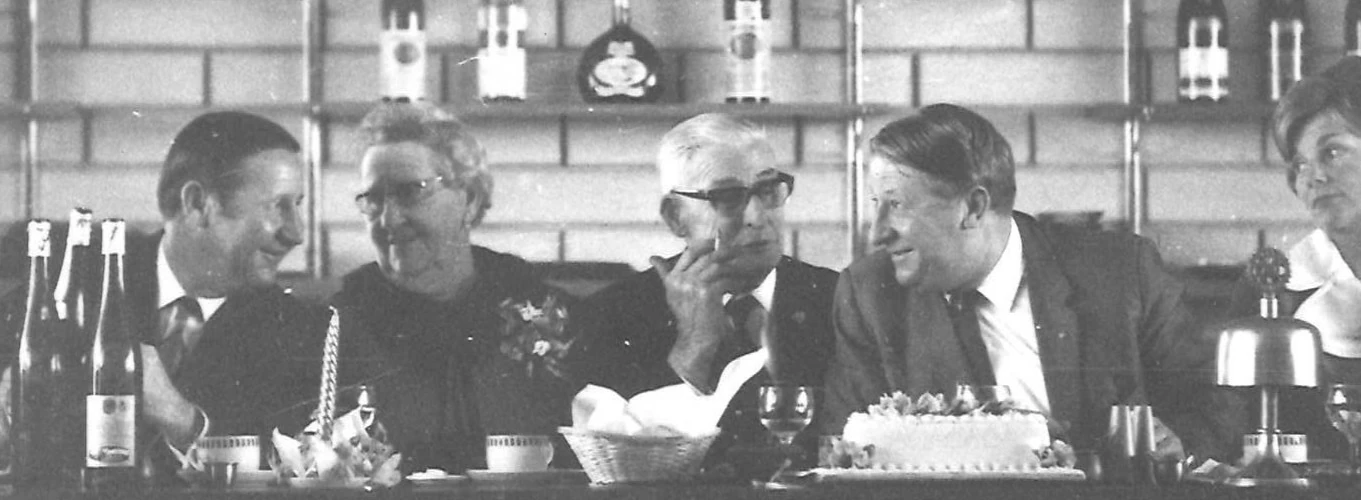
1920 – New Start
In 1923 John Theodore Johnson and his brother-in-law Beno Rhode, saw an opportunity and established a small chaff mill in Stockport, South Australia. Shortly after, John bought out his brother-in-law and the company that would one day become JT Johnson and Sons was born.

1930 – Building a Company
Johnson’s built on initial success to become a major supplier of chaff to markets around South Australia.

1940 – Company Growth
In 1945 JT Johnson’s became a Caltex fuel agency in Stockport, South Australia. Johnson’s would continue as a fuel distributor for 40 years. Jean Johnson, Max’s wife, would manage the books for Clyde and Max.

1950 – New Location
In 1957 JT moved the business to Kapunda, the heart of one of South Australia’s finest hay-growing regions. Over the next few years, with the help of JT’s son’s Max and Clyde, the business flourished.

1960 – Exporting
Both Max and Clyde worked hard to build Johnson’s in the 1960’s with Max being quite the entrepreneur. Johnson’s began exporting chaff and oats to Singapore company Thai Chay, a company which they still supply today.

1970 – Investment
With the growing demand for animal feed, Johnson’s commissioned their first pellet mill in 1976 to supply the live sheep export trade from Port Adelaide, South Australia. Supporting this growth were local farmers with quality hay and grain products.

1980 – Investment
In 1985, the 3rd generation of Johnson’s took over. Denis, Jack, Peter and Chris invested in a new and unique High Fibre Pellet Mill. The upgrade allowed Johnson’s to formulate specific feeds to meet customer needs.
In 1987, Johnson’s built on their reputation by entering the export hay market in Japan, Southeast Asia and the Middle East. This was a turning point for Johnson’s in the global market. Some of these relationships are still maintained today.

1990 – Joint Venture
Growing from small export beginnings, to become a leader in the industry, it wasn’t done alone. A joint venture agreement with Japanese company Asahi Industries in 1995, formed Johnson Asahi. The company’s hay processing plants in Horsham and Dooen, Victoria, produces oaten hay, alfalfa hay and straw.

2000 – Modern Technology
In 2005 Johnson’s installed a Hunterwood hay plant in Kapunda, South Australia which was imported from Canada. This machine would provide the latest hay production and x-ray technology.
After its success in South Australia, another Hunterwood plant would be installed in Horsham, Victoria in 2007.

2010 – Fourth Generation
In 2013 brothers from the fourth generation, Robbie and Mark, saddled up. They implemented a major upgrade of the pellet mill in 2016, incorporating innovative technology to bring operations into the modern era.
In 2018 a joint venture with Singaporean company Yarra Corp established Yarralinka Livestock Co. The feedlot on the Adelaide Plains, provides high-quality beef cattle fed exclusively with Johnsons’ high fibre pellets.

2020 – Growth
With ongoing business growth and increasing demand, a new hay processing facility was built in Dooen, Victoria in 2023 and we excited to announce the purchase of a production facility in Highbury, WA. The facility is in early stages of production however, we look forward to production starting in early 2024. This new facility will expand the processing capacity for Johnson’s to supply customers around the world.

2023 and beyond
Now in the care of the fourth generation, the company remains 100% family-owned as it continues to diversify and build solid partnerships in Australia and around the world.
Always wondering what might be on the horizon, there’s no doubt this business has a bright future.
